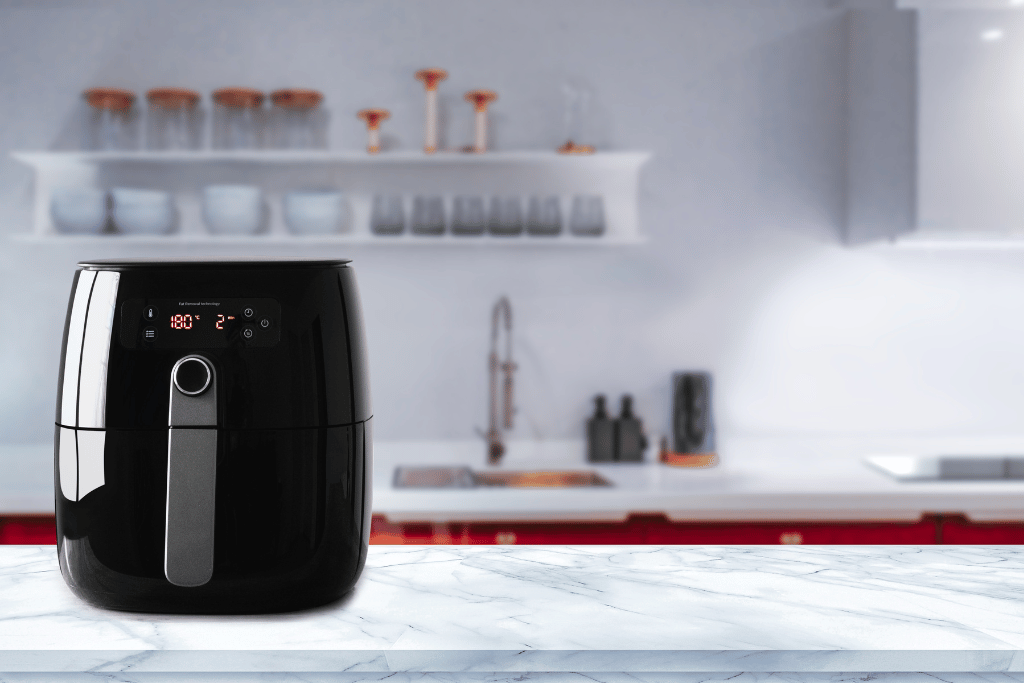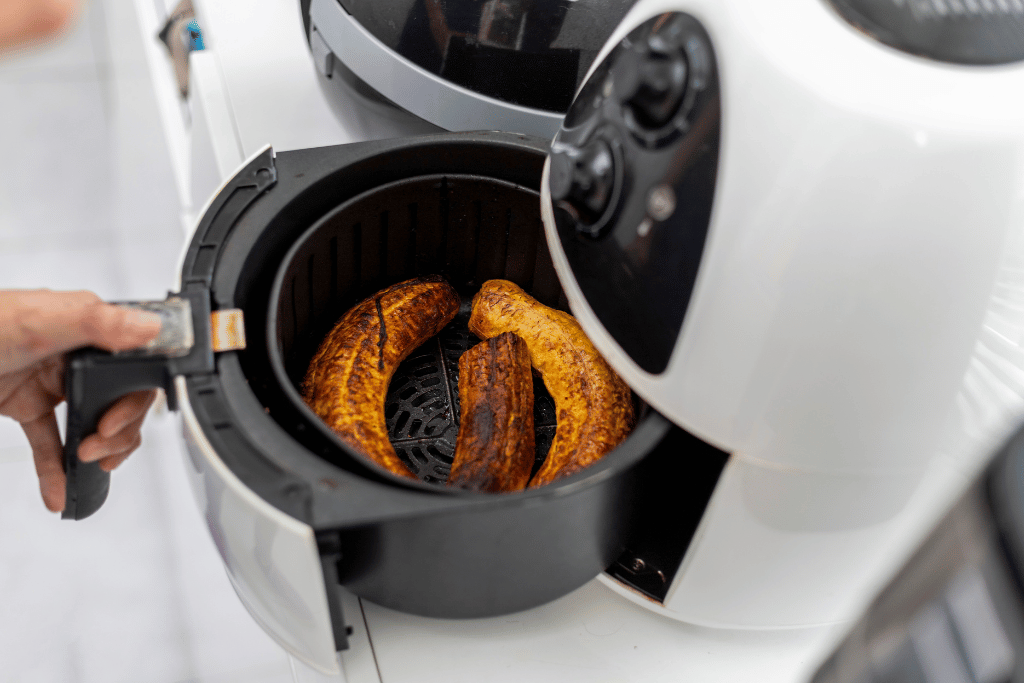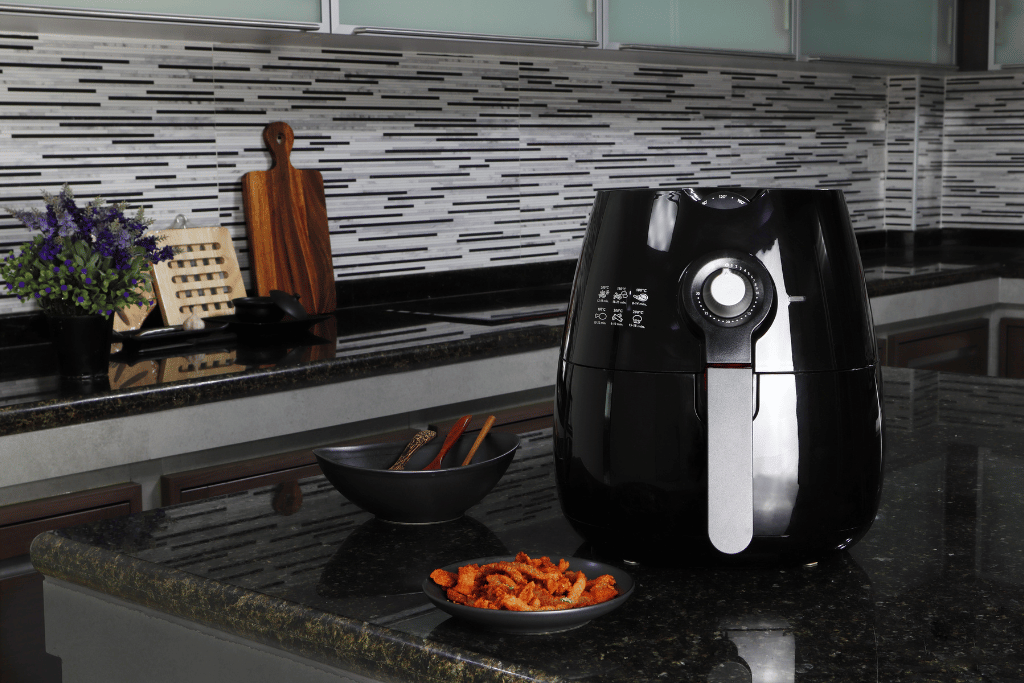
Hey, curious cooks! Ever wondered if your trusty air fryer gets a little too hot on the outside? You’re not alone! I’ve been on a crispy fries and golden chicken nuggets journey with my air fryer, and I’ve had my moments of concern about whether it might be heating up more than just my food.
Join me on a journey to uncover the truth: do air fryers get hot on the outside? We’ll dive into this topic, exploring whether these culinary companions keep their cool on the outside while dishing out piping hot meals within.
Let’s unravel the mystery together and see if our beloved air fryers bring the heat a bit too close to home—literally!
Understanding Air Fryer Functionality
To grasp the essence of how air fryers operate, it’s crucial to understand their functional mechanisms. These appliances have redefined the culinary landscape by utilizing a unique cooking method that minimizes oil usage while delivering crispy and delicious results.
A. How Air Fryers Work
At the core of an air fryer’s operation lies a combination of rapid air technology and convection heating. A heating element located close to the cooking chamber generates intense heat, while a high-powered fan circulates this hot air rapidly around the food.
B. Components Involved
Key components within an air fryer include the heating element, fan, and cooking chamber. The heating element acts as the heat source, while the fan facilitates the even distribution of hot air, ensuring consistent cooking results.
Do Air Fryers Get Hot on the Outside?
One common concern among air fryer users is whether these appliances become hot on the exterior during operation. The answer typically varies based on multiple factors inherent to individual air fryer models and their design.

Air fryers do generate heat, primarily within the cooking chamber where the cooking process takes place. However, the extent to which this heat transfers to the exterior surface depends on several variables, including the cooking temperature, duration, air circulation, and the unit’s overall insulation and design.
While it’s normal for the exterior of an air fryer to warm up during use due to the heat generated internally, many modern models are engineered with features aimed at minimizing external heat transfer. Efficient insulation and well-thought-out design elements contribute to containing the majority of the generated heat within the cooking chamber.
Understanding these factors helps users manage expectations regarding the external temperature of their air fryers and take necessary precautions for safe handling during and after cooking sessions.
7 Common Reasons Air Fryers Overheat
Certainly, here are seven common reasons why air fryers might overheat:
- Blocked Air Vents: When air vents or openings are obstructed, the appliance struggles to release excess heat, leading to overheating. Ensure these vents are clear and unobstructed during operation.
- Excessive Oil or Grease Buildup: Accumulated oil or grease in the cooking basket, drawer, or heating element can hinder airflow and heat dissipation. Regular cleaning helps prevent overheating due to clogged components.
- Cooking Beyond Capacity: Overfilling the cooking basket or exceeding the recommended food quantity can obstruct air circulation, causing the appliance to work harder and potentially overheat.
- Cooking at High Temperatures for Extended Periods: Prolonged cooking sessions at very high temperatures might strain the air fryer, leading to overheating. Optimal usage within a recommended temperature and time limits can prevent this.
- Faulty Thermostat or Heating Element: Malfunctioning components, like the thermostat or heating element, could cause the air fryer to heat beyond safe limits. Regular maintenance and professional checks help detect and resolve these issues.
- Poor Ventilation or Location: Placing the air fryer in an enclosed space or near heat-sensitive objects might impede proper airflow and ventilation, resulting in overheating. Ensure sufficient space and proper ventilation around the appliance.
- Internal Circuitry Issues: In rare cases, internal electrical or circuitry problems could cause an air fryer to overheat. If the appliance consistently overheats despite proper usage, seeking professional assistance or contacting the manufacturer is advisable.
Cool Touch Exterior Air Fryer: An Advanced Safety Design

A “Cool Touch Exterior Air Fryer” refers to an air fryer designed with safety in mind, featuring an exterior surface that remains cool or doesn’t get excessively hot during operation.
1) Safety-Oriented Design
The core objective of a cool-touch exterior is to prevent accidental burns or discomfort when interacting with the appliance. Through specialized materials or insulation, these air fryers effectively contain internal heat within the cooking chamber, reducing its transmission to the outer surface. This design ensures a safer cooking environment, particularly in households with children or in spaces where inadvertent contact with the appliance is possible.
2) Emphasized Feature by Manufacturers
Manufacturers prominently highlight the cool-touch exterior as a key selling point, underscoring its role in enhancing safety and user convenience. Despite the cool exterior design, users should remain cautious as these air fryers might emit some warmth, especially during extended cooking sessions or at higher temperatures.
3) User Assurance
Choosing a cool-touch exterior air fryer provides users with a sense of reassurance, especially for those prioritizing safety and seeking a user-friendly cooking appliance for their kitchen.
What Happens If The Air Fryer Overheats?

If an air fryer overheats, several things might occur:
- Automatic Shut-Off: Many modern air fryer models come equipped with safety features like an automatic shut-off mechanism. When the appliance detects excessive heat, it shuts down to prevent damage or potential hazards.
- Smoke or Burning Smell: Overheating can cause food particles or grease inside the air fryer to burn, leading to smoke or a noticeable burning smell. This can indicate that the appliance has exceeded safe temperatures.
- Component Damage: Continuous overheating might damage internal components like the heating element or thermostat. This can affect the appliance’s performance and longevity, leading to potential malfunctioning.
- Fire Hazard: In extreme cases, prolonged overheating without safety measures can pose a fire risk. It’s crucial to address overheating issues promptly to avoid such hazards.
If you suspect your air fryer has overheated, it’s essential to unplug it immediately and let it cool down. Check for any signs of damage, smoke, or burning smells. Ensure that the appliance is clean and free from obstructions that might hinder proper airflow, as clogged vents or excessive grease buildup can contribute to overheating.
For safety reasons, refrain from using the air fryer until you’ve identified and resolved the cause of overheating. If the problem persists or if there’s visible damage, it’s advisable to contact the manufacturer or seek professional assistance to inspect and repair the appliance. Regular maintenance and following manufacturer guidelines for usage can help prevent overheating issues with air fryers.
Can You Put an Air Fryer on a Wooden Surface? Exploring the Risks & Best Practices
Space Requirements Around Your Air Fryer for Safe Use

Having adequate space around your air fryer is essential for proper ventilation and safety. A general guideline is to leave at least 4 to 6 inches of space on all sides of the appliance. This clearance allows for proper air circulation and prevents any potential hazards.
Here’s a breakdown of space considerations:
- Front and Back: Leave at least 4 to 6 inches of space in front and behind the air fryer. This ensures easy access for loading and unloading the food basket and allows heat to dissipate without affecting nearby surfaces.
- Sides: Maintain a similar clearance on the sides of the air fryer. This prevents interference with adjacent items, ensures proper ventilation, and minimizes the risk of overheating surrounding objects.
- Above: Avoid placing anything directly above the air fryer, ensuring free airflow for the appliance. This prevents any obstruction to the vent or exhaust areas.
Maintaining ample space around your air fryer not only contributes to safe operation but also helps optimize its cooking performance. It’s a good practice to check the manufacturer’s guidelines for specific clearance recommendations, as these may vary slightly based on the model and design of the air fryer.
Safety Considerations While Using an Air Fryer
Ensuring safety while using an air fryer is crucial for a worry-free cooking experience. Let’s explore some essential safety measures to keep in mind:
A. Tips for Safe Handling During Operation
- Placement: Always place the air fryer on a stable, heat-resistant surface away from other appliances or flammable materials. Ensure adequate clearance around the appliance for proper ventilation.
- Preheating: Allow the air fryer to preheat as recommended in the user manual before adding ingredients. This ensures even cooking and minimizes sudden temperature changes.
- Avoid Overfilling: Follow the recommended maximum capacity to prevent overcrowding, which may hinder proper air circulation and cooking efficiency.
B. Potential Risks and Precautions for the Outer Surface Heat

- Caution When Touching: Be mindful of the air fryer’s exterior temperature during and after cooking. Use oven mitts or allow the appliance to cool down before touching its outer parts.
- Keep Clear: Avoid placing items on or near the air fryer while in use. Maintaining a clear space around the appliance prevents accidental burns or damage to nearby objects.
- Cooling Down: Allow the air fryer to cool down before cleaning or storing it away. This prevents accidental burns and ensures safe handling.
By adhering to these safety tips, you can mitigate potential risks and enjoy the convenience of your air fryer with peace of mind.
Wrap Up
Yes, air fryers do get hot on the outside. The heating element inside the air fryer can reach temperatures of up to 400 degrees Fahrenheit, and this heat can transfer to the exterior of the appliance. While the exact temperature of the exterior will vary depending on the model of the air fryer and the length of time it has been in use, it is always best to be cautious and avoid touching the air fryer with bare hands.
To prevent burns, it is important to use oven mitts or hot pads when handling the air fryer, especially when it is first turned on or after it has been cooking for a long time. It is also a good idea to place the air fryer on a heat-resistant surface, such as a trivet or a countertop mat, to protect your countertops from heat damage.
Understanding the factors influencing external heat, such as cooking temperature, duration, and appliance design, empowers users to make informed decisions. Modern air fryers strive to minimize external heat, ensuring a safer cooking environment without compromising on culinary efficiency.
By following these simple precautions, you can safely enjoy the many benefits of using an air fryer.
Frequently Asked Questions
Is the outside of an air fryer hot?
The exterior of an air fryer can get warm during operation, but modern models often feature designs that keep the outside relatively cool. They’re engineered to minimize external heat for safer handling.
Where should air fryers not be placed?
Avoid placing air fryers near heat-sensitive materials, under cabinets, or close to other heat-emitting appliances. Adequate space around the air fryer is essential for proper ventilation and safety.
Can I put an air fryer on the countertop?
Yes, you can typically place an air fryer on a countertop. Ensure it has enough space around it for proper ventilation and safe operation. Avoid obstructing air vents or placing them near other heat sources.
Is it safe to touch the outside of an air fryer during or after cooking?
While air fryers are engineered to reduce external heat, it’s advisable to avoid prolonged contact with the exterior during operation or immediately after cooking to prevent any potential discomfort.
Can I place an air fryer on different surfaces without causing damage?
Air fryers are generally safe to place on various surfaces like countertops, but it’s essential to ensure adequate ventilation around the appliance and avoid heat-sensitive materials to prevent any damage or safety issues due to heat exposure.
How can I ensure the exterior of my air fryer remains cool?
Maintaining proper clearance around the air fryer, following recommended cooking times and temperatures, and regular maintenance such as cleaning vents can help ensure the exterior remains cool during operation.